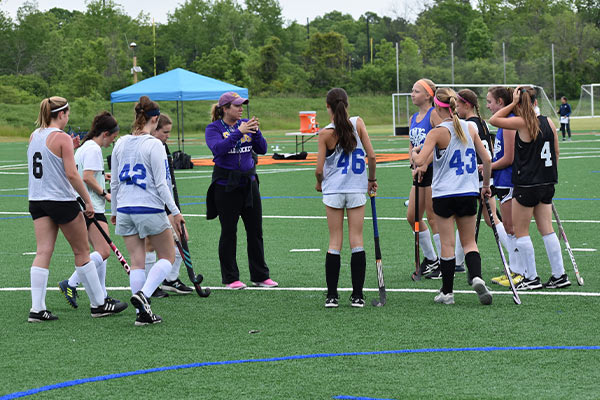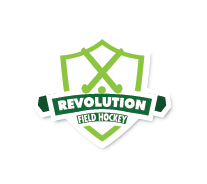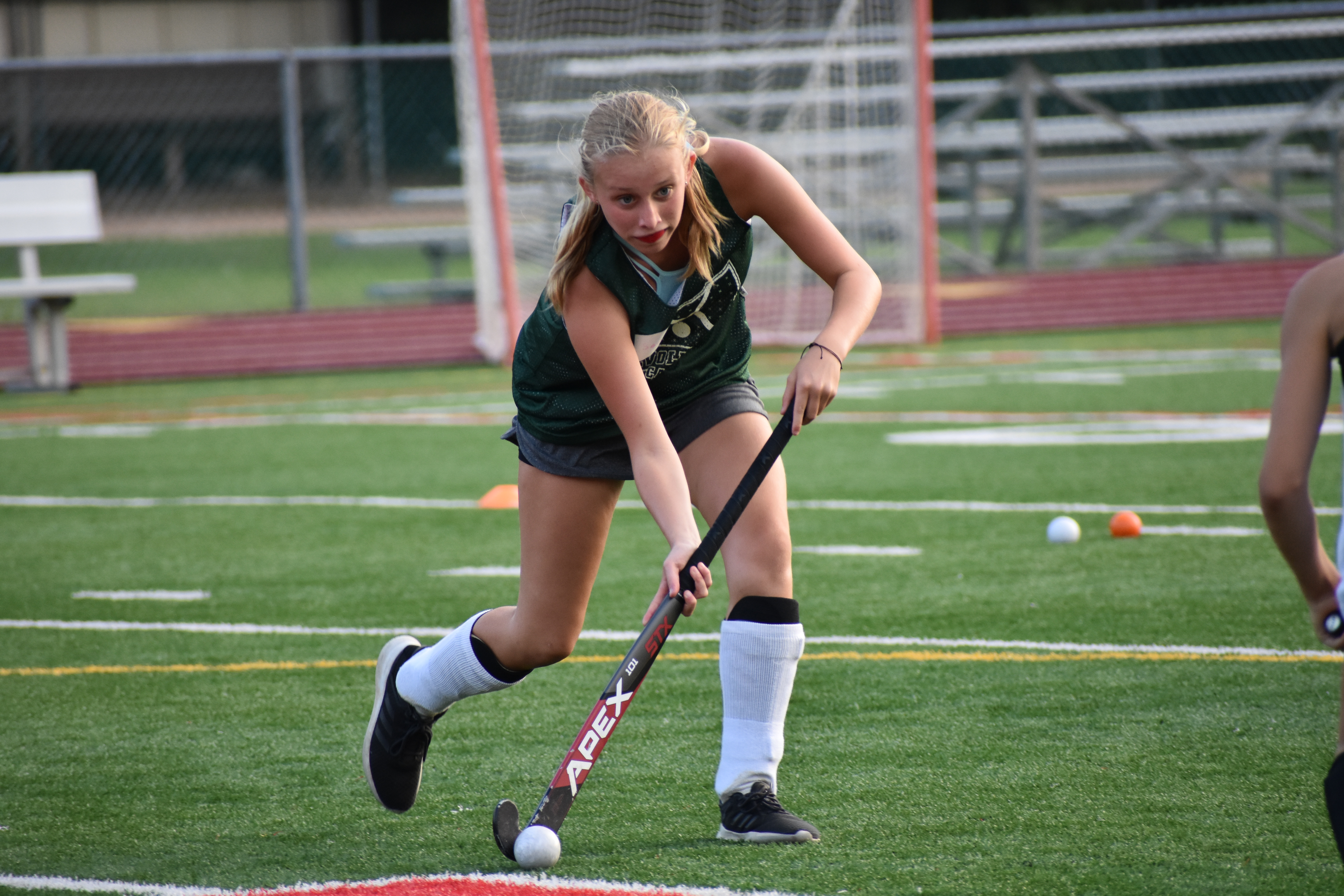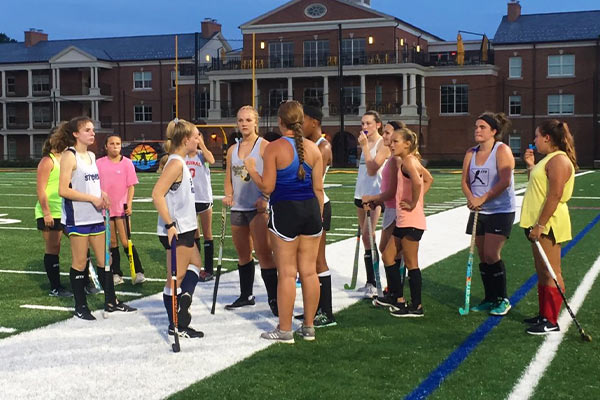5 Field Hockey Skills You Need to Master

What field hockey skills does it take for players to watch their on-field performance hit a new level? That’s a really good question we answer during our Connecticut Field Hockey Camps, along with all the other Revolution field hockey camps we host throughout the country each summer.
Our Camp Directors will design a program that helps you raise many areas of your game from both a mental and physical aspect. Five field hockey skills in particular that are important to master, though, are hitting, passing, leading and positioning, deception, and the jab and poke. We’ll discuss each today and provide some field hockey tips to help you master them.
Hitting
Being successful at hitting as a field hockey player can mean different things depending on your position. This type of skill is important for any position on the field because there are so many different aspects to consider. Field hockey players must be mindful of ball position, the position of their feet, head, and the rest of the body, along with hip rotation, grip, swing, wrist action, and follow through.
There are just a few things that should be committed to muscle memory in order to make it all easier! If you’re looking for a way to hit a field hockey ball harder, check out this video from Hockey Performance Academy.
Helpful Tips
- Practice your stance: Ensure your feet are correctly positioned with your left foot slightly forward (for right-handed players) to maintain balance.
- Focus on hip rotation: Rotate your hips as you swing to generate more power in your hit.
- Work on grip and swing technique: Hold your stick firmly but not too tightly, and practice swinging from the shoulder to increase the range and power of your hit.
- Follow through with your swing: Ensure your stick follows through towards your target to maintain accuracy and power.
Passing
Field hockey is a game about movement as much as anything else during a given contest. Having players that are able to pass to teammates in such a way that doesn’t disrupt this moving is incredibly important. As we just talked about with hitting, this is useful for every position on the field. However, the manner in which you pass the ball to a teammate may differ depending on your position.
Helpful Tips
- Maintain a firm grip on your stick: This helps with control when passing the ball.
- Practice different types of passes: Push passes for short distances and slap hits for longer distances to understand how to use them effectively in a game.
- Work on accuracy: Set up targets and practice hitting them consistently to improve your passing accuracy.
- Develop spatial awareness: Play practice games to get used to passing under pressure and learning to anticipate teammates’ movements.
Leading and Positioning
Coincidentally enough, leading and positioning goes hand-in-hand with the skill of passing (it’s almost like we ordered it this way on purpose!). While it’s crucial for an offensive player to effectively pass the ball to others and position their own body appropriately to do so, it’ll all get wasted if the recipient of that pass isn’t in a good enough position to receive the pass itself.
Leading allows a field hockey player to have more time on the ball in order to make better decisions, while timing is equally important because without getting the timing right, this entire skill is thrown off.
Helpful Tips
- Practice off-ball movement: Work on moving into open spaces without ball possession to make yourself an available passing option.
- Improve your anticipation skills: Learn to predict where the ball will go next and position yourself accordingly.
- Communicate with teammates: Use verbal and non-verbal cues to coordinate movements and passes on the field.
- Drill timing exercises: Work on drills that require you to reach a specific spot at the right moment to receive a pass.
Deception
Being successful in other parts of your field hockey game will likely be dependent on the level of deception you’ll be able to play off on an opposing player. Building up this particular aspect of your game will allow you the opportunity to have more time with the ball since the opposition won’t really have an idea of what you’re trying to accomplish.
Helpful Tips
- Master the art of body feints: Use your body to fake movements and mislead defenders.
- Practice stick skills: Offensive players should work on quick stick maneuvers like dribbles and pulls to keep defenders guessing.
- Incorporate sudden changes of pace: Learn to accelerate and decelerate quickly to throw off your opponent’s timing.
- Use your eyes: Look in one direction while planning to move or pass in another to mislead opponents.
Jab and Poke
Whether you’re a midfielder, striker, or defender, this type of tackle is an underused skill by field hockey players. The point of this move is to put pressure on the player controlling the ball in hopes that the direction of the ball will be changed.
It’s important to note that jabbing directly at the ball isn’t something that you always have to do – you can jab at certain spots near the ball to force your opponent into going in a direction that might make it easier to set a teammate up for a move of their own.
Helpful Tips
- Focus on footwork: Good footwork is essential for effective jabbing; practice moving quickly and staying balanced.
- Develop quick hands: Practice quick jabs with your stick to disrupt your opponent’s control without overcommitting.
- Learn to read the opponent: Anticipate the ball carrier’s movements to time your jabs effectively.
- Practice defensive positioning: Work on staying between your opponent and the goal while being ready to jab, maintaining a stance that allows for quick movement in any direction.



